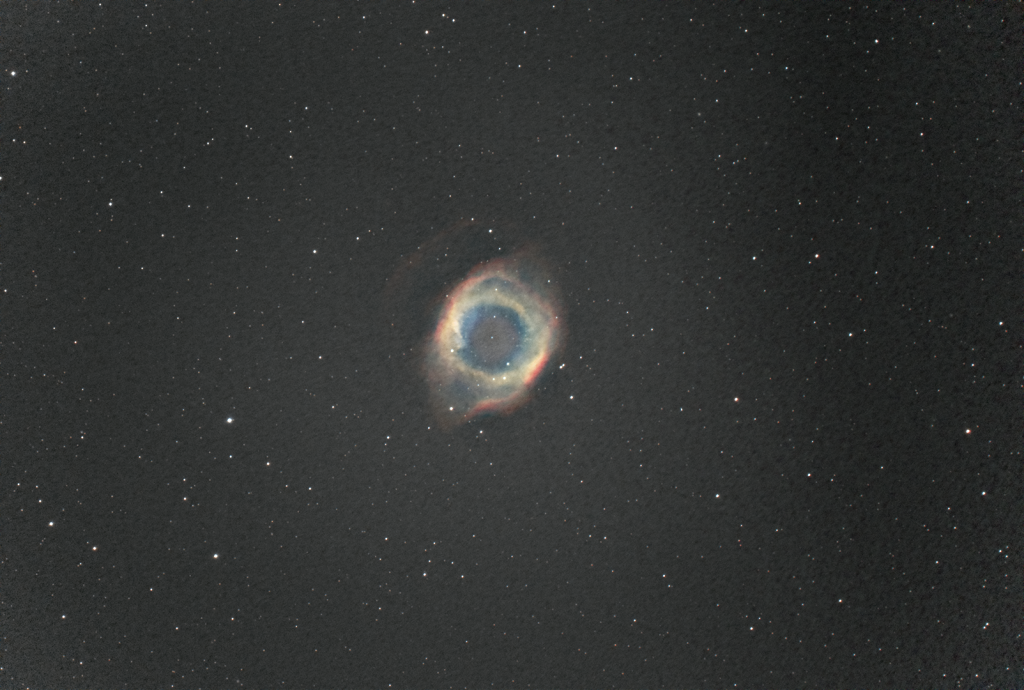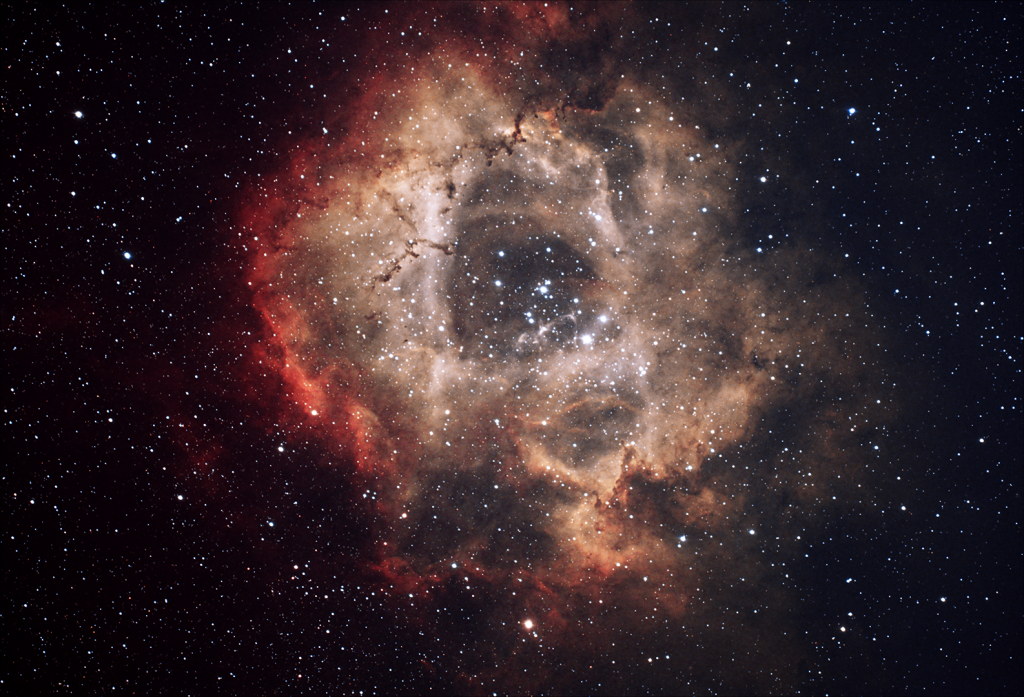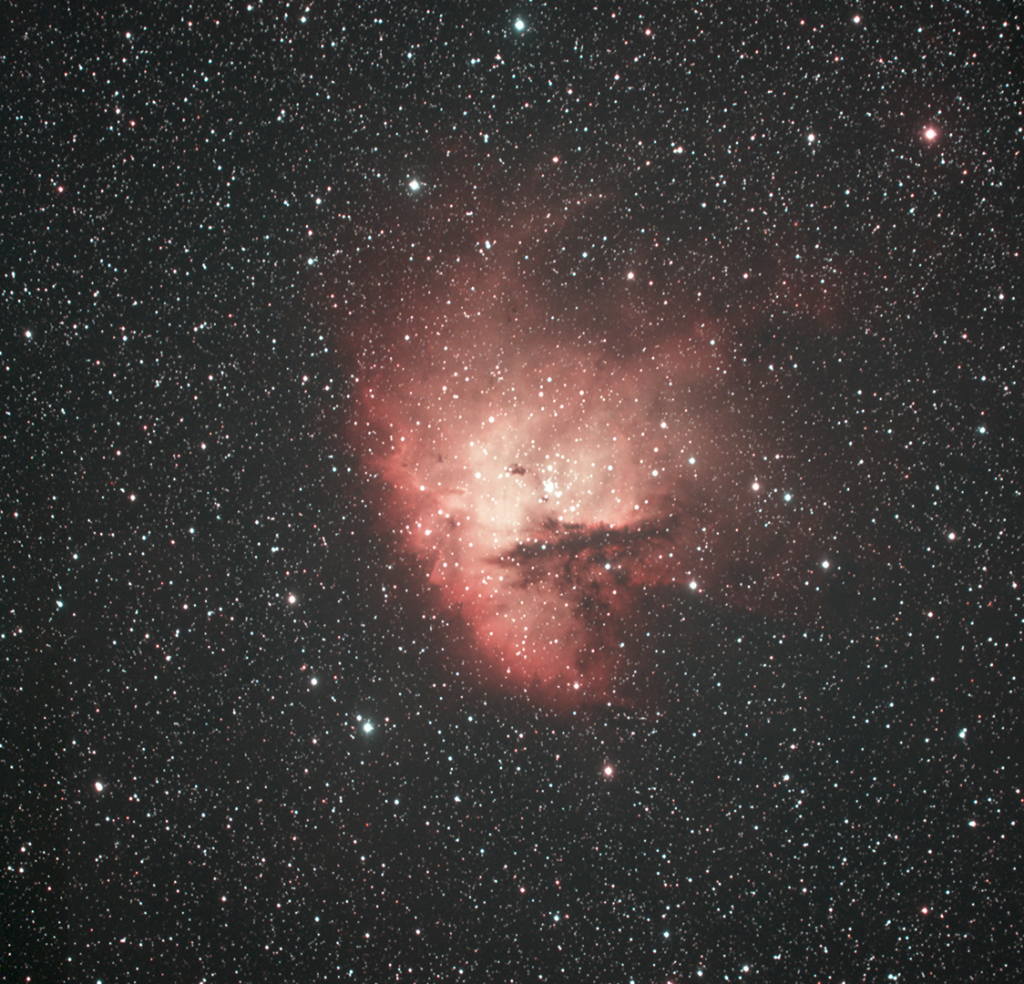
This is the Helix Nebula in the constellation of Aquarius. It never gets too high in our sky but now in late December it is especially low and sets early in the evening. I shot this over two nights under an 80+% illuminated Moon (Friday & Saturday) because by the time the Moon is gone, it will be that much lower in the sky. Anyway, 11″ SCT with Hyperstar shooting at f/1.9 and L-eNhance dual narrowband filter. 31 three minute subs.
From Wikipedia: The Helix Nebula (also known as NGC 7293 or Caldwell 63) is a planetary nebula (PN) located in the constellation Aquarius. Discovered by Karl Ludwig Harding, probably before 1824, this object is one of the closest to the Earth of all the bright planetary nebulae. The distance, measured by the Gaia mission, is 655±13 light-years. It is similar in appearance to the Cat’s Eye Nebula and the Ring Nebula, whose size, age, and physical characteristics are similar to the Dumbbell Nebula, varying only in its relative proximity and the appearance from the equatorial viewing angle. The Helix Nebula has sometimes been referred to as the “Eye of God” in pop culture, as well as the “Eye of Sauron”.
From the Far Side: This is the awning of the cage of Asparagus.


